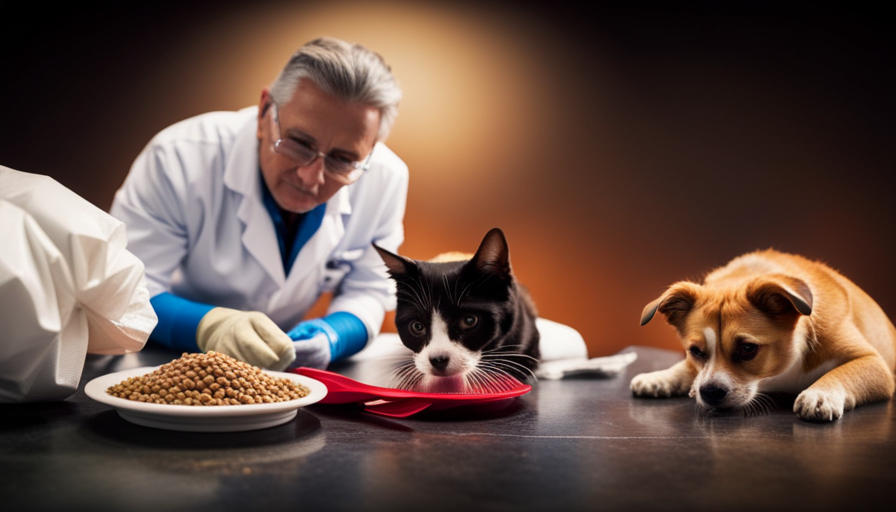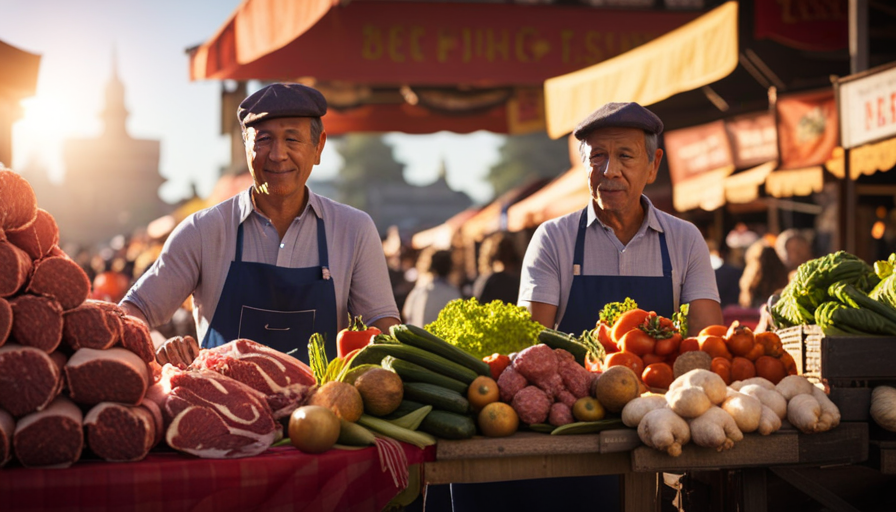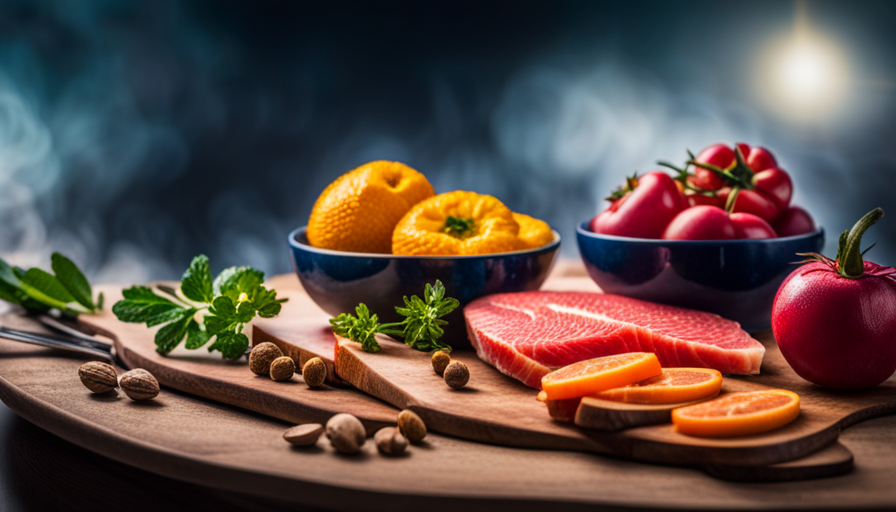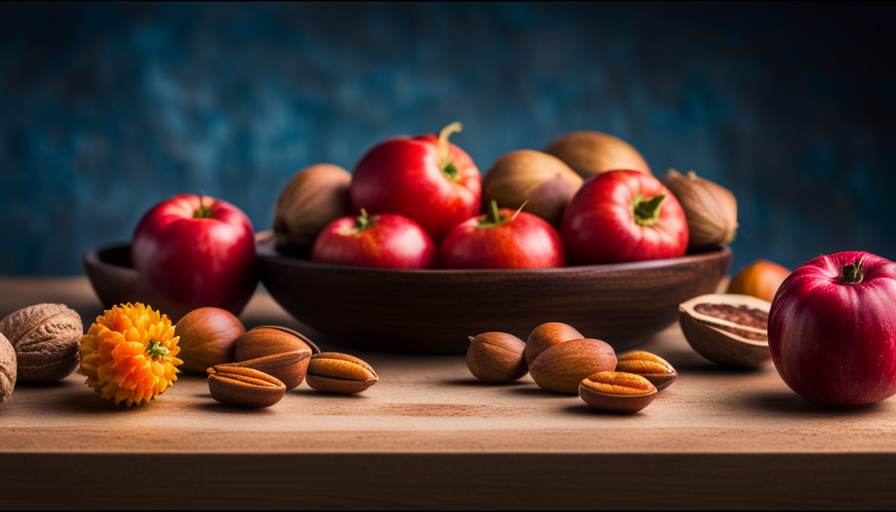Have you ever thought about whether the food you’re giving your furry companion is truly the optimal choice for their well-being?
Many pet owners are turning to raw diets in an effort to provide their pets with the most natural and nutritious meals possible. But is raw pet food really the right choice?
While it may seem like a healthy alternative, the truth is that raw pet food can be risky unless you really know what you are doing.
In this article, we will explore the benefits and risks of a raw diet, the importance of consulting with a veterinarian, and the proper handling and storage techniques to avoid contamination and foodborne illnesses.
We will also discuss the importance of monitoring your pet’s health and well-being, as well as considering alternative options for a balanced diet.
By understanding the facts and making an informed decision, you can ensure the best possible health for your beloved pet.
Key Takeaways
- Raw pet food can be risky unless you have proper knowledge and understanding of what you’re doing.
- Consulting with a veterinarian is crucial before making any changes to your pet’s diet, especially when considering a raw food diet.
- Proper handling and storage techniques are important to avoid contamination and foodborne illnesses when feeding raw pet food.
- Homemade diets can be challenging to formulate correctly, and consulting a veterinarian or veterinary nutritionist is recommended to ensure proper nutrient balance and prevent deficiencies or excesses.
Understanding the Nutritional Needs of Your Pet
You need to understand your pet’s nutritional needs before deciding on their diet. Providing proper nutrition is essential for their overall health and well-being. While commercial pet food can meet most of their dietary requirements, some pet owners prefer to prepare homemade pet food. However, it is important to note that homemade diets can be challenging to formulate correctly. Without proper knowledge and understanding, your pet may suffer from nutritional deficiencies or excesses.
One important consideration is the need for nutritional supplements. When preparing homemade pet food, it’s crucial to ensure that your pet is getting all the necessary vitamins and minerals. This may require adding supplements to their diet. Consult with a veterinarian to determine the appropriate supplements for your pet’s specific needs.
Additionally, it’s essential to research the benefits and risks of a raw diet. Raw pet food has gained popularity in recent years, with proponents claiming various health benefits. However, it’s crucial to be aware of the potential risks associated with feeding raw food to your pet.
Understanding the nutritional needs of your pet is the first step in making informed decisions about their diet. Transitioning into the subsequent section, let’s explore the research surrounding the benefits and risks of a raw diet.
Researching the Benefits and Risks of a Raw Diet
Exploring the pros and cons of feeding your furry friend a natural diet can shed light on the potential benefits and drawbacks. Researching the benefits and risks of a raw diet is essential before making any changes to your pet’s feeding routine. While there are potential advantages to a raw diet, such as improved digestion and healthier skin and coat, it’s crucial to understand the potential risks involved as well.
When researching the benefits of a raw diet, consider the following points:
- Improved digestion: Raw diets can provide natural enzymes and probiotics that support a healthy digestive system.nn2. Healthier skin and coat: The high-quality proteins and essential fatty acids found in raw diets can contribute to a shinier coat and healthier skin.nn3. Enhanced dental health: Chewing on raw bones and tougher meat can help remove plaque and tartar from your pet’s teeth.
However, it’s equally important to be aware of the potential risks associated with a raw diet:
- Bacterial contamination: Raw meat can contain harmful bacteria like Salmonella or E. coli, which can pose a risk to both pets and humans.nn2. Nutritional imbalances: Preparing a balanced raw diet requires knowledge and expertise to ensure all essential nutrients are included.nn3. Potential choking hazards: Raw bones can splinter and cause choking or internal injuries if not fed appropriately.
Understanding the benefits and risks of a raw diet can help you make an informed decision for your pet’s health. However, consulting with a veterinarian is crucial to ensure you provide a well-rounded, balanced diet that meets your pet’s specific nutritional needs.
Consulting with a Veterinarian
Before making any changes to your furry friend’s diet, it’s crucial to consult with a veterinarian to ensure their health and wellbeing. A veterinarian consultation is essential when considering a raw food diet for your pet. They can provide valuable guidance and expertise on the safety and benefits of feeding raw food to your pet.
During a consultation, your veterinarian will assess your pet’s overall health, taking into consideration their age, breed, and any pre-existing medical conditions. They can help determine if a raw diet is suitable for your pet and tailor it to meet their specific nutritional needs.
To give you an idea of what a veterinarian consultation entails, here’s a table summarizing the key points:
| Veterinarian Consultation | Raw Food Safety |
|---|---|
| Assess pet’s health | Proper handling of raw food |
| Tailor diet to pet’s needs | Storage of raw food |
| Address any concerns | Potential risks |
Consulting with a veterinarian provides you with the necessary knowledge and guidance to safely transition your pet to a raw food diet. By understanding the potential risks and learning how to handle and store raw pet food properly, you can ensure your pet’s wellbeing. In the next section, we will discuss the importance of proper handling and storage of raw pet food for their safety.
Proper Handling and Storage of Raw Pet Food
Handling and storing raw pet food can be a matter of life or death for your furry friend, so it’s crucial to follow proper guidelines. Here are some key steps to ensure the safety of raw pet food:
-
Keep it cold: Raw pet food should be stored in the refrigerator or freezer to prevent bacterial growth. This helps maintain the nutritional value and reduces the risk of contamination.
-
Separate from human food: Raw pet food should be kept separate from human food to avoid cross-contamination. Use separate cutting boards, utensils, and storage containers for raw pet food.
-
Wash hands and surfaces: Thoroughly wash your hands, utensils, and surfaces with hot, soapy water after handling raw pet food. This helps eliminate any potential bacteria that may cause foodborne illnesses.
-
Use it promptly: Raw pet food should be used within a short period to minimize the risk of bacterial growth. Follow the manufacturer’s guidelines for proper storage and use-by dates.
Proper handling and storage of raw pet food is essential for your pet’s health. By following these guidelines, you can reduce the risk of contamination and foodborne illnesses.
In the next section, we’ll discuss how to avoid contamination and foodborne illnesses without compromising your pet’s nutrition.
Avoiding Contamination and Foodborne Illnesses
To keep your furry friend healthy and happy, it’s crucial to ensure that contamination and foodborne illnesses are avoided when handling and storing raw pet food. Proper handling and storage techniques are essential to reduce the risk of cross contamination and maintain raw food safety standards.
When handling raw pet food, it’s important to separate it from human food to avoid any potential transfer of harmful bacteria. Use separate cutting boards, utensils, and containers for raw pet food and clean them thoroughly after each use. Additionally, always wash your hands with soap and water for at least 20 seconds before and after handling raw pet food.
Proper storage is also key in minimizing the risk of contamination. Raw pet food should be stored in sealed containers and kept refrigerated or frozen to prevent the growth of harmful bacteria. Avoid leaving raw pet food at room temperature for extended periods.
By following these guidelines, you can significantly reduce the risk of contamination and foodborne illnesses associated with raw pet food. Taking these precautions ensures that your pet receives the necessary nutrients without compromising their health.
As we move on to the next section, it’s important to consider how to balance nutrients and vitamins in your pet’s diet without compromising their well-being.
Balancing Nutrients and Vitamins in Your Pet’s Diet
After learning about the importance of avoiding contamination and foodborne illnesses when feeding raw pet food, let’s now focus on another crucial aspect of this diet: balancing nutrients and vitamins in your pet’s diet.
This is especially important when it comes to homemade pet food, as it can be challenging to ensure that all the necessary nutrients are provided in the right proportions.
One common concern with raw pet food is the potential for pet food allergies. Just like humans, pets can develop allergies to certain ingredients, such as beef, chicken, or grains. Therefore, it’s essential to carefully select the ingredients for homemade pet food and monitor your pet for any adverse reactions.
To balance nutrients and vitamins, it’s recommended to consult with a veterinarian or a veterinary nutritionist who can guide you in formulating a complete and balanced diet for your pet. They can help you determine the appropriate ratios of protein, carbohydrates, fats, vitamins, and minerals based on your pet’s specific needs.
By ensuring a well-balanced diet, you can help prevent nutrient deficiencies or excesses that could lead to health issues in your pet.
Now that we understand the importance of balancing nutrients in your pet’s diet, let’s explore the next crucial step in raw pet food feeding: monitoring your pet’s health and well-being.
Monitoring Your Pet’s Health and Well-being
Make sure you keep a close eye on your furry friend’s overall health and happiness as you transition them to a raw diet, as it’s crucial to monitor any changes and ensure their well-being.
One important aspect to monitor is their weight. Raw diets can sometimes result in weight loss or gain, so it’s essential to regularly weigh your pet and adjust their portions accordingly. If you notice any significant changes in weight, consult with your veterinarian to ensure your pet’s nutritional needs are being met.
In addition to weight, it’s also important to monitor your pet’s exercise habits. A raw diet can provide your pet with increased energy and vitality, so you may notice changes in their activity levels. Make sure to engage in regular exercise with your pet and observe any changes in their stamina or behavior during physical activities. If you notice any concerns, such as fatigue or reluctance to exercise, consult with your veterinarian to address any potential underlying issues.
Transitioning your pet to a raw diet requires careful monitoring of their health and well-being. By keeping a close eye on their weight and exercise habits, you can ensure they’re thriving on their new diet.
In the next section, we’ll discuss the steps to transition your pet to a raw diet.
Transitioning Your Pet to a Raw Diet
Embrace the wild side of your furry companion’s diet and embark on a journey of nourishment and vitality. Transitioning your pet to a raw diet can be a beneficial and rewarding process, but it’s important to proceed with caution and knowledge.
The transition process should be gradual, allowing your pet’s digestive system to adjust to the new diet. Start by introducing small amounts of raw food alongside their regular diet, gradually increasing the proportion over time. This allows their body to adapt and prevents digestive upset.
Common challenges during the transition may include finicky eating behavior or mild digestive issues. It’s crucial to monitor your pet closely during this period. Look for any signs of discomfort or adverse reactions, such as vomiting or diarrhea. If these symptoms persist, consult with your veterinarian for guidance and support. They can provide valuable advice tailored to your pet’s specific needs.
As you transition your pet to a raw diet, it’s essential to consider alternative options for a balanced diet. While raw food can be a healthy choice, it may not be suitable for every pet. Explore other options, such as high-quality commercial pet foods or home-cooked meals, to ensure your furry friend receives all the necessary nutrients for optimal health. Remember, a well-rounded and balanced diet is key to your pet’s overall well-being.
Considering Alternative Options for a Balanced Diet
Consider exploring alternative options for a balanced diet that can best meet your furry companion’s nutritional needs and promote their overall well-being. While raw pet food may be risky if not properly prepared, there are other feeding methods that can provide a balanced diet for your pet.
Here are some alternative options to consider:
-
Homemade pet food: Making your own pet food allows you to have full control over the ingredients and can ensure that your pet is getting a well-balanced meal. However, it’s important to consult with a veterinary nutritionist to ensure that your homemade meals meet all of your pet’s nutritional requirements.
-
Commercially available cooked diets: There are a variety of commercially available cooked diets that are formulated to provide a balanced diet for pets. Look for brands that have undergone rigorous testing and meet the Association of American Feed Control Officials (AAFCO) standards.
-
Freeze-dried or dehydrated diets: These diets are convenient and can be a good option for pet owners who want to provide a balanced diet without the hassle of cooking. Just add water to rehydrate the food and you have a nutritious meal for your pet.
-
Prescription diets: If your pet has specific dietary needs due to a medical condition, your veterinarian may recommend a prescription diet. These diets are specially formulated to address specific health concerns and should only be used under veterinary supervision.
-
Supplemented commercial diets: Some pet owners choose to feed a combination of commercial pet food and fresh ingredients. This can provide the benefits of both convenience and control over ingredients.
By considering these alternative feeding methods, you can make an informed decision for your pet’s health and well-being. It’s important to weigh the pros and cons of each option and choose the one that best suits your pet’s individual needs.
Making an Informed Decision for Your Pet’s Health
Now that we have explored alternative options for a balanced diet for our pets, let’s dive into making an informed decision for their health. One option that some pet owners consider is making homemade pet food. While it may seem like a healthier option, it is important to approach it with caution and knowledge.
Before embarking on the journey of making homemade pet food, it is crucial to understand the nutritional needs of our furry friends. A balanced diet for pets requires the right combination of protein, carbohydrates, fats, vitamins, and minerals. Without proper knowledge and guidance, it can be challenging to meet these requirements consistently.
To help you make an informed decision, let’s compare the pros and cons of commercial pet food versus homemade pet food in the following table:
| Commercial Pet Food | Homemade Pet Food |
|---|---|
| Convenient | Requires time and effort |
| Offers balanced nutrition | Nutritionally complex |
| Affordable | Can be costly |
| Regulated by authorities | Potential for nutrient deficiencies |
| Wide variety of options | Limited ingredient availability |
As you can see, both options have their advantages and disadvantages. It is essential to weigh the pros and cons carefully before deciding which route to take for your pet’s health. Consulting with a veterinarian and a veterinary nutritionist can provide valuable insights and guidance in making the best choice for your furry companion.
Frequently Asked Questions
How can I ensure that my pet is getting all the necessary nutrients on a raw diet?
Ensuring nutrition on a raw diet requires careful consideration. Raw food risks must be mitigated through proper planning.
To provide all necessary nutrients, focus on variety and balance. Include a mix of muscle meat, organ meat, and bones to ensure essential proteins, vitamins, and minerals. Additionally, consider adding supplements like fish oil for omega-3 fatty acids.
Regular monitoring and consultation with a veterinarian are crucial to maintain your pet’s optimal health on a raw diet.
What are the potential risks associated with feeding my pet raw food?
Feeding your pet raw food can pose potential health risks if not handled properly. It’s crucial to understand that raw diets may lack essential nutrients, leading to nutritional imbalances. Moreover, improper handling techniques can increase the risk of bacterial contamination, such as Salmonella or E. coli.
Thoroughly researching and consulting with a veterinarian is necessary to ensure your pet’s raw diet is balanced and safe. Following proper hygiene practices and sourcing high-quality ingredients are paramount to minimize these risks.
Are there any specific precautions I should take when handling and storing raw pet food?
When it comes to handling and storing raw pet food, there are several precautions to keep in mind. First, always wash your hands thoroughly before and after handling raw pet food to prevent the spread of bacteria.
Additionally, use separate cutting boards and utensils for raw pet food to avoid cross-contamination.
Store raw pet food in sealed containers in the refrigerator or freezer to maintain freshness and prevent the growth of harmful bacteria.
Following these precautions can help ensure the safety of both you and your pet.
How can I prevent contamination and foodborne illnesses when feeding my pet raw food?
To prevent cross contamination and foodborne illnesses when feeding my pet raw food, I follow strict handling protocols. First, I ensure that all surfaces and utensils are thoroughly cleaned and sanitized before and after use.
I also separate raw meat from other foods and store it in leak-proof containers on the bottom shelf of the refrigerator.
Additionally, I always wash my hands with warm soapy water for at least 20 seconds after handling raw meat.
These precautions help minimize the risk of contamination and keep my pet safe.
What are some alternative options to a raw diet that can still provide a balanced diet for my pet?
There are several alternative options to a raw diet that can still provide a balanced diet for your pet. One option is commercial pet food, which is formulated to meet your pet’s nutritional needs.
Another option is home-cooked meals, using recipes that are balanced and vet-approved.
Additionally, there are commercially available cooked pet meals that can provide a balanced diet.
It’s important to consult with your veterinarian to determine the best alternative option for your pet’s specific needs.
Is it safe to feed my pet raw food if I don’t know what I’m doing?
Feeding your pet raw vegan school lunch options can be risky if you’re not knowledgeable. It’s important to research proper nutrition and food safety guidelines before making the switch. Consulting with a professional or attending a raw vegan school lunch options workshop can help ensure your pet’s health and safety.
Conclusion
After carefully considering the nutritional needs of our beloved pets and researching the benefits and risks of a raw diet, consulting with a trusted veterinarian, and learning about proper handling and storage techniques, it’s clear that raw pet food can be a risky choice.
Contamination and foodborne illnesses are genuine concerns. Instead, we should explore alternative options for a balanced diet that prioritize our pet’s health and well-being.
Let’s make informed decisions that keep our furry friends safe and healthy.










